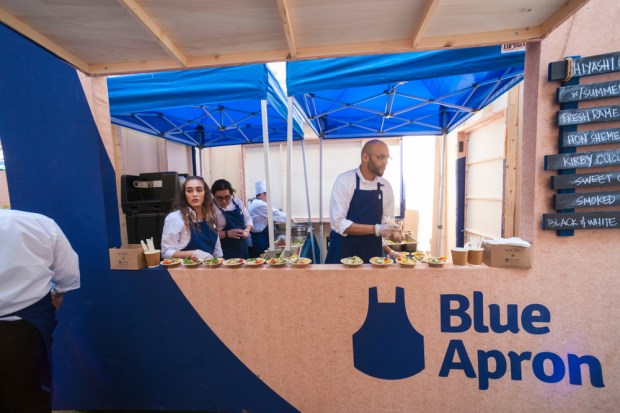Pandemic-Fueled Meal Kits Surge Likely Have Short Shelf Life

COVID-19 has caused many businesses to struggle for survival, but it’s actually turned out to be a boon for others. Consider meal kit company Blue Apron.
Blue Apron was a pioneer in an industry that analysts initially predicted would change the face of grocery shopping. But as recently as late last year, the company was struggling to stand out in the crowded meal kit market that it had helped create, and was widely viewed in early 2020 as a strong takeover or merger target.
But then COVID hit America in March and changed everything. Restaurants closed for dine-in service and Americans suddenly found that they were solely responsible for their own dinners. Many consumers were shocked to discover they didn’t really know how to cook.
By early April, Blue Apron was reporting increases in its customer base and net revenues as demand for its meal-prep boxes spiked among Americans tired of eating peanut butter and jelly sandwiches for dinner.
“We have started to deliver on the first stage of our growth strategy with sequential quarter-over-quarter growth in both net revenue and customers, along with continued strength in certain other key customer metrics, which we saw even prior to the impact of COVID-19,” Chief Executive Officer Linda Findley Kozlowski said when announcing first-quarter results. “As we move into the second quarter, [we] are focused on driving customer retention and establishing longer-term consumer habits out of the heightened demand we have been seeing as a result of the impact of COVID-19.”
The successes continued as the pandemic deepened, and Blue Apron’s experience is neither unique nor an outlier. Meal kit companies have been gaining ground rapidly, such that an industry that looked to be on the edge a year ago is now flourishing – and pulling in new players.
Chicago-based restaurant Frontier told The Counter that it initially jumped into the world of meal kits when its 130-seat dining room closed down. “We started putting together all these little packages and wanted to make them reasonable and creative, staying in the wheelhouse of smoking meats and group dining,” executive chef and partner Brian Jupiter told the publication.
The eatery’s meal kits quickly gained popularity, and restaurants nationwide have taken to offering consumers the option of buying all ingredients for their favorite meals and instructions on how to cook them at home. For example, Shake Shack is selling all the fixings for burgers, while California Pizza Kitchen is offering a wide variety of DIY options. Even the Waffle House is throwing its hat in the ring, selling waffle mix that will allow home chefs to bring the restaurant’s magic to their own kitchens.
And as COVID-19 recurrences in many U.S. regions hamper restaurant reopenings, meal kits are drawing interest from increasingly diverse sources. For instance, meal kit company Home Chef has announced plans to partner with meat substitute maker Impossible Foods to place plant-based burgers in its kits.
This is the first time Impossible Foods products have shown up in the meal kit realm. The move is part of Home Chef’s new “Customize It” feature, which lets users adjust their orders to fit individual needs like extra protein, more veggies or additional servings.
Home Chef’s parent company, Kroger, hasn’t broken out specifics on the unit’s sales, but Vice President Brian Irwin recently told Progressive Grocer that the company has had a very strong year. “We have had greater sales both from existing customers as well as new customers,” he said. “Customers continue to buy more meals per delivery and order more often.”
Progressive Grocer also reported that as of May, Berlin-based meal kit company HelloFresh posted a 66.4 percent year-over-year global revenue increase to $754.8 million. U.S. revenues grew 82.3 percent and active users soared 88.6 percent to 2.64 million. The company also saw orders increase 82.2 percent to 8.95 million.
So, the question isn’t whether the pandemic is boosting meal kits, but more about what happens when the pandemic ends. The field is once again getting crowded, sparked by an unexpected black swan event that has kept consumers out of restaurants and mostly making their own meals.
But will meal kits hold consumers’ interest when customers are no longer captive to home cooking? Will the industry manage to make itself “sticky” by the time in-person restaurant dining returns?
It seems that meal kit companies still have some tinkering to do with their business “recipes” if they want to survive once the traditional restaurant industry reopens.
